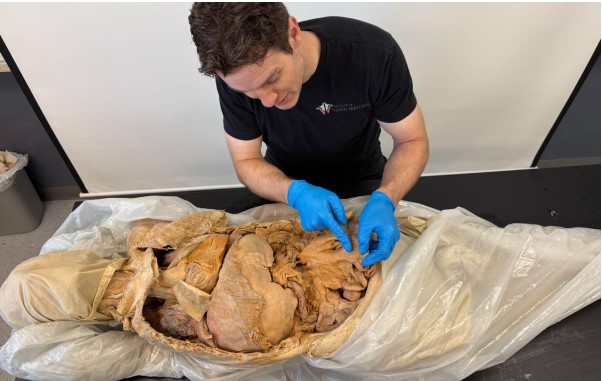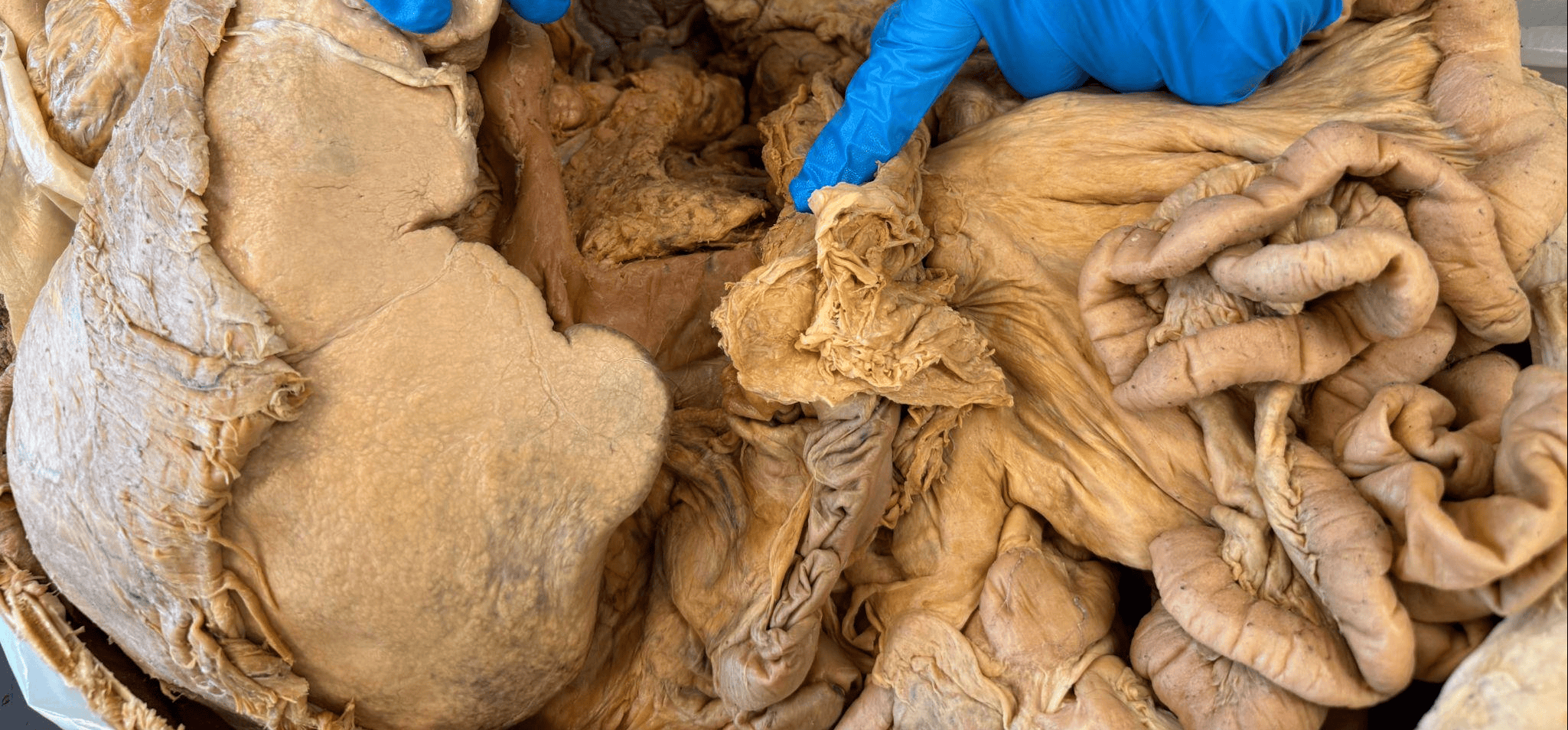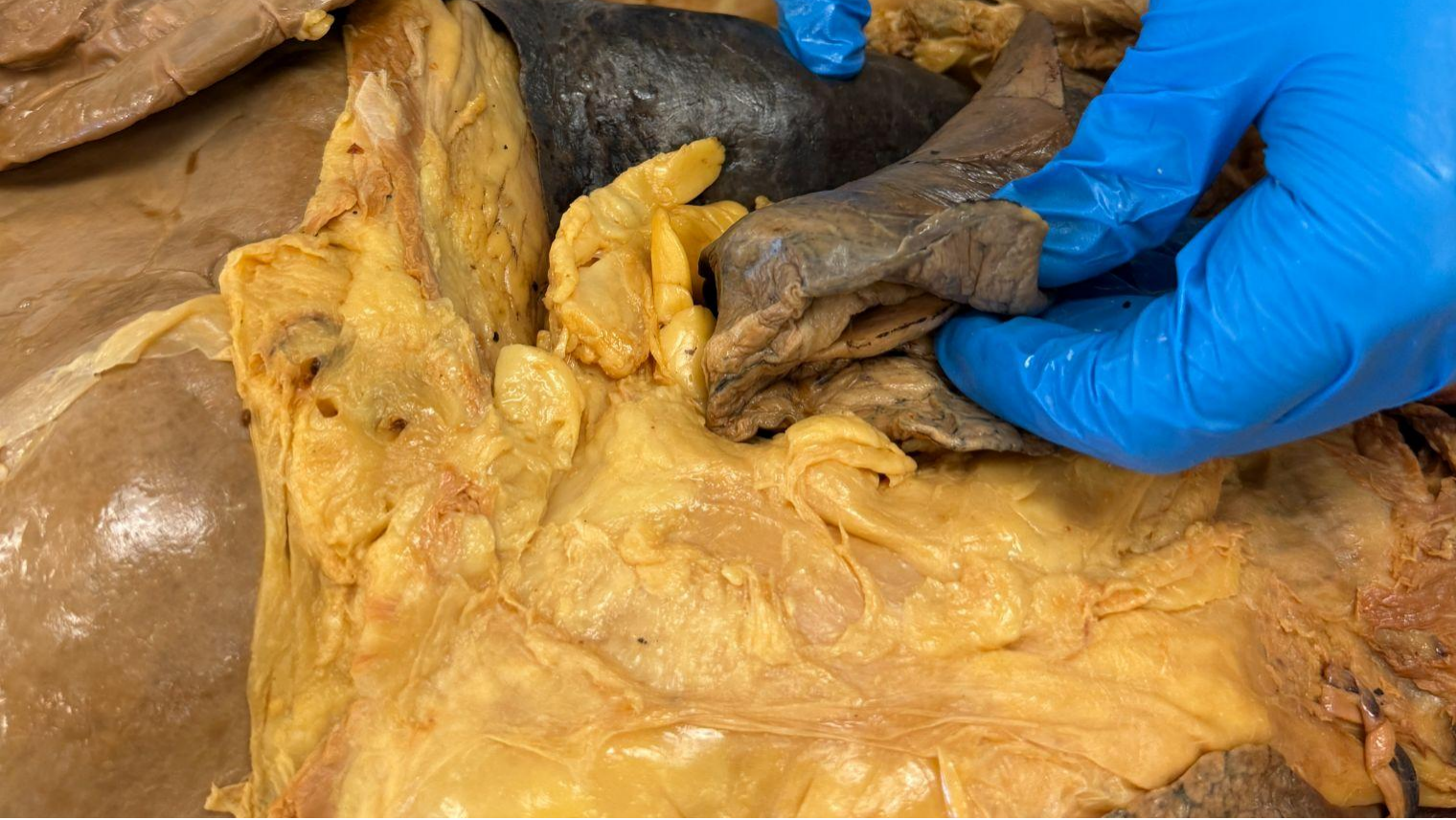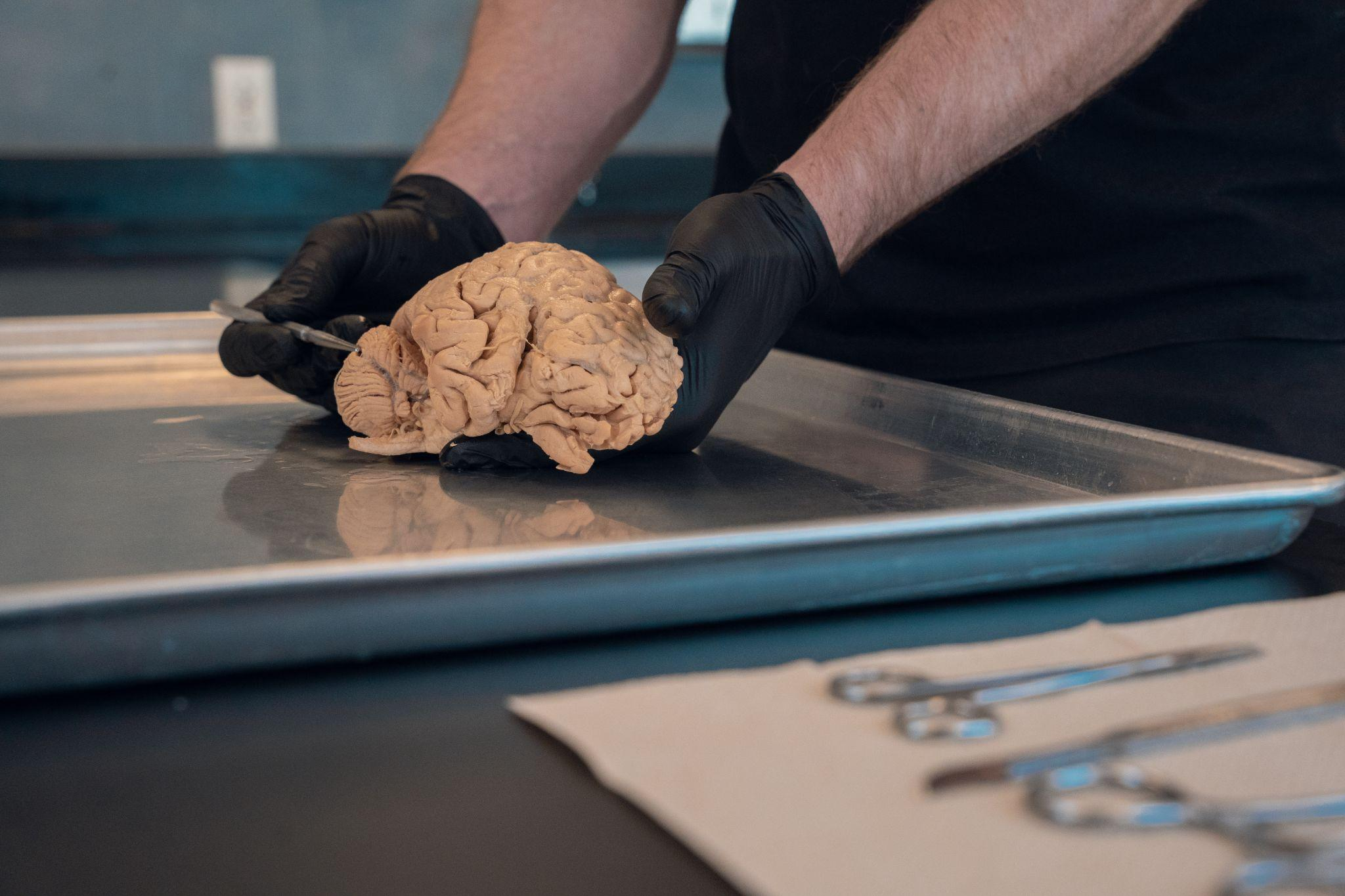The Digestive System: Your Body’s Unsung Hero
Sep 02, 2025
The digestive system isn’t just about breaking down food; it’s a dynamic network of organs that fuels every cell, defends against pathogens, and even communicates with your brain. At the Institute of Human Anatomy, we specialize in transforming complex systems into engaging, interactive lessons for students, healthcare professionals, and lifelong learners. Whether you’re enrolled in our online anatomy courses, exploring our Anatomy and Physiology e-Book library, or attending a live workshop, this guide will deepen your understanding of how your gut works, why it matters, and how to keep it healthy.
Let’s embark on a journey through the 30-foot-long digestive tract, where anatomy meets everyday life.
1. The Digestive Process: From Mouth to Stomach

Anatomy in Action
- Mouth:
- Mechanical Digestion: Teeth grind food into smaller pieces, increasing surface area for enzymes.
- Chemical Digestion: Salivary amylase breaks down starches into sugars.
- Taste & Smell: Over 10,000 taste buds send signals to the brain, triggering saliva production (1-1.5 liters daily!).
- Esophagus:
- Peristalsis: Involuntary muscle contractions push food downward in 5-8 seconds.
- Lower Esophageal Sphincter: A valve preventing stomach acid from refluxing.
- Stomach:
- Gastric Juice: HCl (pH 1.5-3.5) and pepsin break proteins into peptides.
- Mucosal Barrier: A mucus layer protects the stomach from self-digestion.
Common Disorders
- GERD (Gastroesophageal Reflux Disease): Chronic acid reflux damages the esophagus. Risk factors include obesity and hiatal hernias.
- Peptic Ulcers: Caused by H. pylori bacteria (70% of cases) or NSAIDs like ibuprofen.
Science-Backed Tips
- Eat Slowly: Chewing thoroughly reduces gas and bloating.
- Avoid Late-Night Meals: Lying down after eating worsens reflux.
Internal Link: Learn how NSAIDs like ibuprofen affect digestion in What Does Ibuprofen Do to Your Body?.
2. Small Intestine: The Nutrient Powerhouse
Anatomy in Action
- Duodenum:
- Bile & Pancreatic Juice: Neutralizes stomach acid and emulsifies fats.
- Brush Border Enzymes: Lactase (breaks down lactose) and sucrase (sucrose) finalize carbohydrate digestion.
- Jejunum & Ileum:
- Villi & Microvilli: Increase absorption surface area to 250m², equivalent to a tennis court!
- Nutrient Transport: Amino acids and glucose enter blood vessels; fatty acids join the lymphatic system.
Key Players
- Liver: Produces bile (500-1,000 mL daily) and detoxifies blood.
- Pancreas: Releases bicarbonate (neutralizes acid) and enzymes (lipase, protease, amylase).
Common Disorders
- Celiac Disease: An autoimmune reaction to gluten (in wheat, barley) flattens villi, causing malnutrition.
- Lactose Intolerance: 65% of adults globally lack sufficient lactase.
Pro Tip: Pair iron-rich foods (spinach) with vitamin C (bell peppers) to boost absorption.
Internal Link: Debunk digestion myths in 5 Crazy Myths About the Human Body.
3. Large Intestine: Water Reclamation & Microbial Metropolis

Anatomy in Action
- Colon: Absorbs 1-1.5 liters of water daily, converting liquid chyme into stool.
- Gut Microbiome:
- Diversity Matters: A healthy gut hosts 1,000+ bacterial species. Bacteroidetes and Firmicutes dominate.
- Short-Chain Fatty Acids (SCFAs): Produced by fiber fermentation, SCFAs like butyrate reduce colon cancer risk.
Common Disorders
- Irritable Bowel Syndrome (IBS): Affects 10-15% of adults, causing cramps and irregular bowel habits.
- Diverticulitis: Inflamed pouches in the colon wall, often due to low-fiber diets.
Science-Backed Tips
- Fiber-Rich Diet: Aim for 25-30g daily (e.g., lentils, berries).
- Probiotic Foods: Yogurt, kefir, and kimchi replenish good bacteria.
Internal Link: Explore gut bacteria’s role in The Human Microbiome.
4. Accessory Organs: Liver, Pancreas, & Gallbladder

Liver:
- Detoxification: Metabolizes alcohol, drugs, and ammonia into less harmful substances.
- Bile Production: Stored in the gallbladder, bile breaks down fats into absorbable droplets.
Pancreas:
- Endocrine Function: Releases insulin (lowers blood sugar) and glucagon (raises it).
- Exocrine Function: Produces 1.5 liters of digestive enzymes daily.
Common Disorders
- Gallstones: Cholesterol or bilirubin stones block bile ducts, causing excruciating pain.
- Pancreatitis: Often triggered by alcohol abuse; severe cases require hospitalization.
Pro Tip: Limit fatty foods if you’ve had gallbladder issues.
Internal Link: Understand gallstone formation in Gallstones: Causes and Prevention.
5. The Gut-Brain Axis: How Your Gut Influences Mood

Anatomy in Action
- Enteric Nervous System (ENS): A "second brain" with 500 million neurons lining the gut.
- Neurotransmitters: 90% of serotonin (the "feel-good" hormone) is produced in the gut.
Science-Backed Tips
- Fermented Foods: Sauerkraut and kombucha boost serotonin precursors.
- Stress Management: Chronic stress disrupts gut motility, try yoga or meditation.
Internal Link: Learn how stress affects anatomy in 3 Weaknesses in the Human Body.
6. Diet & Lifestyle: Building a Resilient Gut
- Prebiotics vs. Probiotics:
- Prebiotics (garlic, onions) feed good bacteria.
- Probiotics (yogurt, tempeh) add beneficial strains.
- Hydration: Water supports mucosal lining and prevents constipation.
- Avoid Ultra-Processed Foods: Emulsifiers (e.g., polysorbate-80) disrupt the microbiome.
Case Study: A 2021 Nature study found that a Mediterranean diet (rich in olive oil, fish, and nuts) reduced IBS symptoms by 50%.
External Link: The World Gastroenterology Organization offers global dietary guidelines.
7. Common Digestive Disorders & Management
- GERD: Treat with antacids, elevate your bed, and avoid trigger foods (citrus, caffeine).
- IBD (Crohn’s & Ulcerative Colitis): Autoimmune conditions requiring anti-inflammatory diets and biologics.
- Food Intolerances: Elimination diets (e.g., low-FODMAP) can identify triggers.
Internal Link: Discover how gluten impacts digestion in Gluten: Myths and Facts.
8. How the Institute of Human Anatomy Enhances Your Learning

- Foundations of Human Anatomy Course: Master the GI tract with HD videos and comprehensive medical illustrations.
- Quiz Pack Bundles: Test your knowledge of liver lobules and villi structure.
Conclusion: Your Gut, a Foundation for Lifelong Health
Your digestive system is a testament to the body’s ingenuity, seamlessly converting meals into energy while safeguarding your health. At the Institute of Human Anatomy, we’re passionate about helping you explore these marvels through courses, blogs, and hands-on experiences.
Take Action Today:
- Enroll: Dive deeper with our Top Resources for Learning Anatomy.
Remember: A healthy gut isn’t just about what you eat, it’s about understanding the anatomy that makes it all possible.
FAQs
What causes acid reflux, and how can I prevent it?
Acid reflux occurs when stomach acid flows back into the esophagus due to a weakened sphincter. Prevent it by eating slowly, avoiding late meals, and limiting spicy/fatty foods.
- How does celiac disease affect nutrient absorption?
Celiac disease damages intestinal villi, reducing surface area for absorbing nutrients. This leads to deficiencies in vitamins, iron, and other essential compounds. - What foods support a healthy gut microbiome?
Fiber-rich foods (berries, lentils), probiotics (yogurt, kimchi), and prebiotics (garlic, onions) nourish beneficial gut bacteria and boost short-chain fatty acid production. - Can stress really impact digestion?
Yes! Chronic stress disrupts gut motility and the gut-brain axis, worsening conditions like IBS. Manage stress with meditation, yoga, or deep breathing. - What role does the liver play in digestion?
The liver produces bile to break down fats, detoxifies harmful substances, and stores nutrients like iron and vitamins A/D/E/K.


